#Best Time to Climb Kilimanjaro
Explore tagged Tumblr posts
Text
Mount Kilimanjaro Climbing - What to Expect When Climbing Africa’s Highest Peak

Climbing Mount Kilimanjaro, Africa's highest peak, is a dream adventure for many. Standing at 5,895 meters (19,341 feet), Kilimanjaro provides a unique experience that combines stunning landscapes, diverse ecosystems, and a rewarding challenge.
Here's what you can expect when undertaking this extraordinary Mount Kilimanjaro Climbing journey:
Choosing the Right Route
Kilimanjaro has several climbing routes, each offering a different experience. Popular options include:
The Machame Route, or “Whiskey Route,” which is more challenging but features diverse scenery.
The Lemosho Route, a longer and less crowded option with breathtaking views.
The Rongai Route, the only northern approach, known for its more remote and quieter path.
The Northern Circuit Route, the longest route around the mountain, provides extensive and immersive views.
These Kilimanjaro Climbing Routes should be chosen based on your fitness level, desired challenge, and the time you have available.
Preparation and Training

Climbing Kilimanjaro requires physical preparation. While no technical climbing skills are needed, being in good physical condition is crucial.
Engage in cardiovascular exercises, strength training, and hiking at higher altitudes if possible.
Proper acclimatization is crucial to avoid altitude sickness, so opting for a longer route can give your body more time to adjust.
This is an important aspect to consider when determining the Best Time to Climb Kilimanjaro.
What to Pack

Your Kilimanjaro Packing List should include lightweight, breathable clothing suitable for a range of temperatures.
Kilimanjaro’s climate varies from tropical at the base to arctic at the summit. Essential gear includes waterproof clothing, a good quality sleeping bag, hiking boots, gloves, a hat, and sunglasses.
Also, don’t forget sunscreen, a headlamp, and a durable backpack.
Daily Itinerary and Challenges
Expect to spend 5 to 9 days on the mountain, depending on your chosen Kilimanjaro Climbing Route.
The trek involves long days of hiking, with varying terrain from lush rainforest to arid desert and icy summit conditions.
Each day’s hike typically lasts between 4 to 8 hours, with Kilimanjaro Altitude gain affecting your stamina.
Health and Safety
Kilimanjaro Altitude Sickness is a risk, so stay hydrated, eat well, and listen to your body. Guides will monitor your health and pace to ensure your safety. It’s also essential to have comprehensive travel insurance that covers high-altitude trekking.
The Summit Experience
Reaching the summit, of Uhuru Peak is a breathtaking accomplishment. You’ll likely start your final ascent in the early hours to witness the sunrise from the top. The views are awe-inspiring, offering a panoramic perspective of the surrounding landscape.
Reaching New Heights with the Right Choice
Choosing the Best Kilimanjaro Tour Operator is essential for a memorable and safe climbing experience. It’s essential to match your climbing aspirations with the offerings of the tour operator.
A KPAP partnership, as held by us at African Scenic Safaris, not only assures the ethical treatment of porters but also exemplifies a commitment to climbers’ safety and well-being.
To gain insight, browse testimonials from climbers about their unforgettable journeys with us. Don’t hesitate to inquire about our detailed Kilimanjaro Climbing Packages and receive a complimentary tailored quote.
#Climbing Mount Kilimanjaro#Mount Kilimanjaro Climbing#Machame Route#Lemosho Route#Best Time to Climb Kilimanjaro#Kilimanjaro Packing List#Kilimanjaro Altitude Sickness#Kilimanjaro Climbing Packages#SoundCloud
1 note
·
View note
Text
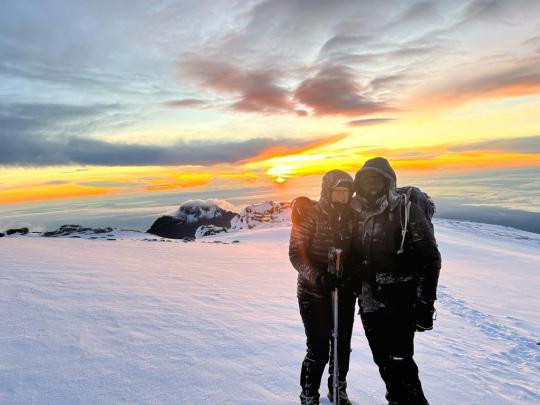
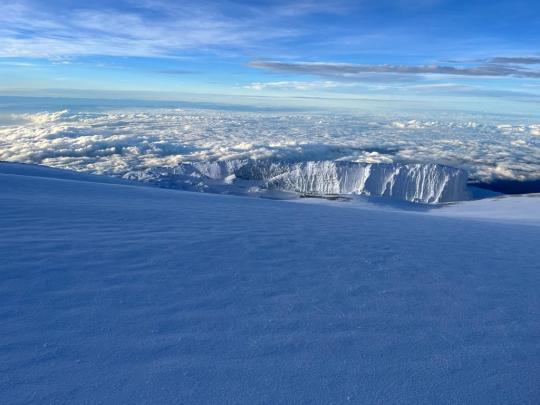
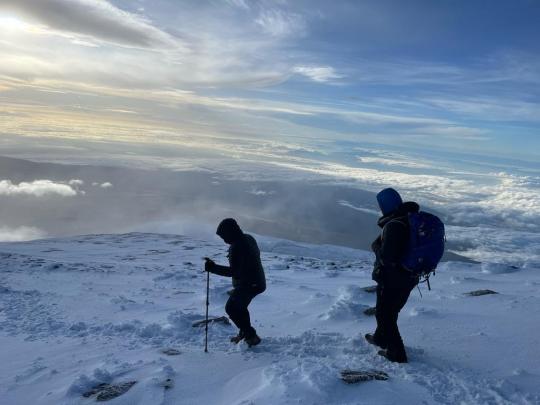
The Machame route on Kilimanjaro is a moderately difficult trail, but very doable even for first-time backpackers with little to no altitude experience. Known as the "Whiskey" route, the Machame route is now the most popular route on the mountain. Compared with Marangu, the days on Machame are longer and the walks are steeper. The Machame route is considered difficult and is best suited for those who are more adventurous and have some hiking or backpacking experience. The route begins from the south, then heads east, traversing underneath Kilimanjaro's southern ice field before summiting. The minimum number of days required for this route is six, although seven days is recommended. The Machame route is scenically beautiful and varied. However, due to the heavy crowds, it loses some of its spenders.
Day 1: Machame Gate to Machame Camp Elevation (ft): (3,000 m): 5. 6,000 ft (1,830 m) to 10,200 ft (3,100 m). Distance: 11 km. Hiking Time: 5-7 hours Habitat: montane forest. Camp: Machame Camp. The drive from Moshi to the Mount Kilimanjaro National Park gate takes about 50 minutes. The journey passes through the village of Machame, which is located on the lower slopes of the mountain. We now leave the park gate and walk through the rain forest on a winding trail up a ridge. Lower down, the trail can be muddy and slippery. Gaiters and trekking poles are a good idea here. We continue a short distance until we reach the Machame Camp.
Day 2: Machame Camp to Shira Camp
Elevation (ft): 10,200 ft (3,100 m) to 12,600 ft (3,840 m). Distance: 9 km. Walking Time: 4-6 hours Habitat: Moorland. Full-board Shira Cave Camp After breakfast, we leave the glades of the rain forest and continue on an ascending path, crossing the valley along a steep, rocky ridge. The route now turns west onto a river gorge until we arrive at the Shira campsite.
Day 3: Shira Camp to Lava Tower to Barranco Valley. Shira Camp to Barranco Camp (3,950 m.): 5-7 hours walking 12,600 ft (3,840 m) to 12,700 ft (3,860 m). Distance: 15 km. Walking Time: 5-7 hours Habitat: Semi-desert. Full Board Barranco Camp Today we walk on a gentle ascent with panoramic views. We traverse the southwest side of Kilimanjaro, passing underneath the Lava Tower and the final section of the Western Breach, and after a hot lunch at the bottom of the Lava Tower (4,600 m), we descend to the bottom of the Great Barranco Valley (3,950 m). .
Day 4: Barranco Camp to Barafu Camp Barranco Camp to Barafu Hut Camp {4600m} 6-8 hours. 4000m/13,000ft to 4700m/15,350ft Distance: 9km/ Walking Time: 6-8 hours Habitat: Alpine Desert Full Board at Barafu Camp. After breakfast, we leave Barranco and continue on a steep ridge up the Barranco Wall (elves 4250m/13,900ft), through the Karanga Valley (elves 4050m/13,250ft) to the junction which connects with the Mweka Trail. We continue up to the Barafu Camp. You have completed the South Circuit, which offers views of the summit from many different angles. Here we make camp with views of the summit in the distance.
Day 5: Barafu Camp to Summit, down to Mweka Camp Elevation (ft): 4700m (15,350ft) to 5895m (19,343ft) down to 3090m (10,150ft) Distance: 6km up; 13km down Hiking Time: 5-7 hours up; 5-6 hours down Habitat: Stone scree and ice-capped summit Very early in the morning (midnight to 2 a.m.), we continue our way to the summit between the Rebmann and Reitzel glaciers. You head in a northwesterly direction and ascend through heavy scree towards Stella Point on the crater rim. This is the most mentally and physically challenging portion of the trek. At Stella Point, you will stop for a short rest and be rewarded with the most magnificent sunrise you are ever likely to see. Faster hikers may view the sunrise from the summit. From Stella Point, you may encounter snow all the way on your 1-hour ascent to the summit. Once at Uhuru Peak, you have reached the highest point on Mount Kilimanjaro and the continent of Africa! From the summit, we begin our descent by continuing straight down to the Mweka Camp, stopping at Barafu for lunch. You may want gaiters and trekking poles for the loose gravel going down. We arrive at Mweka Camp and enjoy our last evening on the mountain.
Day 6: Mweka Camp to Mweka Gate, drive to Arusha or Moshi. Elevation (ft): 3090 m (10,150 ft) to 1680 m (5500 ft). Distance: 10km/6mi Hiking Time: 3-4 hours Habitat: Forest Meals: B After breakfast, we continue the descent down to the Mweka Park Gate to receive your summit certificates. At lower elevations, it can be wet and muddy. Gaiters and trekking poles will help. Shorts and t-shirts will probably be plenty to wear (keep rain gear and warmer clothing handy). We will be waiting for you at Mweka Gate to drive you back to your hotel in Arusha or Moshi. Included o Park fees, o Camp fees o Rescue fees o 18% VAT on tour fees & services which cost nearly 55% of the total cost charged. o Transportation to & from the mountain gate o Professional mountain guides, cooks and porters o 3 meals daily while on the mountain
Not Included o Both National and International flights o Medical insurance o Tips to mountain crew o Items of a personal nature o Laundry Services o A doctor for the group
#Kilimanjaro Machame Route#Machame Route Itinerary#6 days Kilimanjaro Trek#Kilimanjaro Summit Climb#Machame Route Highlights#Best Time to Climb Kilimanjaro#Kilimanjaro Altitude Acclimatization#Machame Route Camping#Kilimanjaro Trekking Packages#Uhuru Peak Expedition#Machame Route Difficulty#Kilimanjaro Guided Tours#Climbing Gear for Kilimanjaro#Kilimanjaro Base Camps#Machame Route Camping Sites#Kilimanjaro Flora and Fauna#Acclimatization on Kilimanjaro#Summit Success on Kilimanjaro#Machame Route Permits#Kilimanjaro Adventure Tours
1 note
·
View note
Text

Picking the best travel agency in Tanzania is urgent for a remarkable excursion. Known for customized administration and master nearby information, the top organizations will fit your schedule to accommodate your longings.
#adventure tours tanzania#best time to climb mount kilimanjaro#tanzania safari and zanzibar packages
0 notes
Text
Timing is Everything: Best Time for Kilimanjaro Climb and Safari Packages

Selecting the best time for your Kilimanjaro climb and safari packages can elevate your adventure. Understanding the seasonal climate and wildlife activity in Tanzania enhances both the climbing and safari experience.
Optimal Seasons for Kilimanjaro Climbing
The timing of your climb on Mount Kilimanjaro is critical. The best months for Tanzania mountain climbing are January through mid-March and June to October. These periods offer relatively stable weather, ideal for trekking and clear views of Kilimanjaro’s breathtaking landscape.
During the January to mid-March season, climbers experience warmer conditions on the mountain with minimal rainfall. The June to October period is Kilimanjaro’s dry season, known for cooler, clear skies, which enhance the climbing experience. For those looking to explore other climbing options, Kei Tours and Safaris Ltd. offers a comprehensive guide to mountain climbing in Tanzania.
Safari Adventure: The Prime Wildlife Viewing Months
Pairing a Kilimanjaro climb with a safari in Tanzania is a unique way to experience the country's natural beauty. For the best safari experience, the dry season from June to October is also highly recommended. During these months, the animals gather near watering holes, providing unmatched wildlife sightings, especially in renowned parks like Serengeti and Ngorongoro Crater.
If you’re planning to see the Great Migration, consider visiting in late June to September. These months coincide with wildebeests crossing the Mara River, a spectacle that’s both breathtaking and memorable. For a detailed safari itinerary, you can check out Kei Tours and Safaris Ltd.'s offerings for Mount Kilimanjaro climbing.
Benefits of Choosing the Rainy Season

Although the rainy season (from March to May and November to December) may seem challenging, it can be rewarding for certain adventurers. Lower tourist numbers mean more secluded trails on Kilimanjaro and discounted safari rates. Wildlife spotting may be harder, but the lush, green scenery can create stunning photographic opportunities.
For climbers and travelers seeking a quieter experience, these "off-peak" months offer a unique perspective on Kilimanjaro climb and safari packages.
Tips to Maximize Your Kilimanjaro Climb and Safari
To make the most out of your Kilimanjaro climb and safari experience, consider these tips:
Plan in Advance: Booking early ensures you secure the best guides, accommodation, and permits during the peak seasons.
Choose the Right Route: Each Kilimanjaro route varies in difficulty and scenery. Select a route that fits your experience level and preferred climb duration.
Stay Hydrated and Acclimate: The high altitude requires preparation. Drink plenty of water and allow time to acclimate to avoid altitude sickness.
Bring Essential Gear for Safari: Binoculars, a camera with a zoom lens, and weather-appropriate clothing will make your safari experience even better.
For more detailed guidance on what to bring and expect, you can explore the comprehensive Kilimanjaro and safari itineraries provided by Kei Tours and Safaris Ltd.
Final Thoughts on Choosing the Best Time for Kilimanjaro Climb and Safari Packages
In conclusion, timing is everything when planning your Kilimanjaro climb and safari packages. With the right season, you can enjoy Tanzania’s majestic landscapes and diverse wildlife to the fullest.
#Kilimanjaro Climb#Safari Packages#Tanzania Travel#Mountain Climbing#Best Time to Visit Tanzania#Kilimanjaro Trekking#Wildlife Safari#Tanzania Adventures#Travel Tips for Tanzania#Kilimanjaro Weather
0 notes
Text
Know More About The Best Time For Kilimanjaro Climb
Climbing Mount Kilimanjaro is one of the most rewarding experiences for any adventure-seeker and nature lover. The giant mountain is so named due to its size, making it unique and breathtaking, hence presenting difficult challenges. Therefore, planning and choosing the right season for one's ascent is critical in making most of this trek. You should know more about the best time for Kilimanjaro climb and Mount Kilimanjaro hiking.
Climbing Mount Kilimanjaro Benefits
The most significant benefit of climbing Mount Kilimanjaro is that no technical experience is needed in climbing. The mountain is, therefore open for a variety of hikers from beginners to experienced trekkers. Good physical fitness combined with mental determination can allow most of the persons to top the summit.
Kilimanjaro features diverse landscapes one passes through when hiking it, as well as five ecological zones. One can begin with rich tropical rain forests, then heathland, moorland before finally reaching the white-capped summit with an alpine desert environment. Diverse, this offers an experience never to be forgotten-from unique flora and fauna in each zone to landscape at large.
Accessible Adventure
One of the benefits that really stands out is that, compared to other major peaks, Kilimanjaro is relatively accessible. There are innumerable routes available, each of varying difficulty, so that a hike can be suited to the experience and preferences of the client, thus chosen between easier, quicker routes such as the Marangu Route or more spectacular, longer routes like the Lemosho Route. So, there is something for everybody.

Adventure and Culture in One Package
This is not a hike in the wilderness: many packages for treks come with experiences of Tanzania's vibrant culture. And before or after your trek, you could be having an experience in some Maasai village, tasting local cuisines, and browsing through markets.Mount Kilimanjaro hiking has many rewards, some of which include the thrill of actually reaching its summit, and varied landscapes.
#Best Time For Kilimanjaro Climb#best month kilimanjaro#kilimanjaro climb cost#mount kilimanjaro climb#best time climb kilimanjaro#climbing mount kilimanjaro
0 notes
Text
Choosing the Perfect Time: Best Seasons to Experience Tanzania with Rena Tours
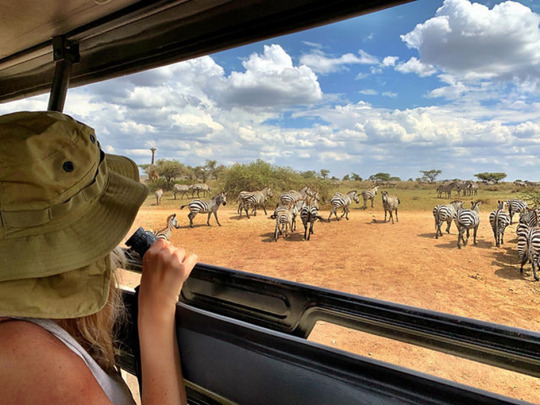
The Best Time to Visit Tanzania depends largely on the type of activities you're interested in, as the country's diverse landscapes and climates offer unique experiences throughout the year.
For wildlife enthusiasts, the optimal time to visit is during the dry season, from late June to October. This period coincides with the Great Migration in the Serengeti, where millions of wildebeest, zebras, and other animals move in a spectacular mass across the plains. The dry season is also ideal for visiting the Ngorongoro Crater and other national parks, as animals gather around water sources, making them easier to spot. The weather is generally sunny and warm, with cooler nights, especially in higher altitudes.
If you’re planning to Climb Mount Kilimanjaro, the best times are during the dry seasons, either from late June to October or from January to early March. These months provide more stable weather conditions, making the ascent safer and more enjoyable.
Beach lovers should consider visiting Tanzania from December to March, when the weather is hot and humid, perfect for enjoying the beautiful beaches of Zanzibar and the mainland coast. This period is also excellent for diving and snorkeling, as the waters are clear and calm.
For bird watchers, the wet season from November to May is ideal. This period sees the arrival of migratory birds and lush landscapes, although it’s worth noting that some remote areas may be less accessible due to rainfall.
While Tanzania Safari Tours offers year-round attractions, the best times to visit for wildlife viewing are during the dry seasons, beach holidays are ideal from December to March, and bird watching is best during the rainy season. Rena Tours specializes in crafting personalized itineraries to maximize your experience based on these optimal times, ensuring you get the most out of your visit to Tanzania.
0 notes
Text

Best Time to Climb Kilimanjaro for Beginners: A Seasonal Guide
Conquering the majestic Mount Kilimanjaro is a dream for many, but for beginners, choosing the right time to climb is crucial. In this blog post, we'll explore the best seasons to climb Kilimanjaro for those new to the mountain, considering factors such as weather, crowds, and overall conditions.
Peak Season (December to February, June to August)
Pros:
Pleasant weather: Clear skies, minimal rainfall, and comfortable temperatures make it ideal for beginners.
Abundant wildlife: Spot a variety of animals, including the elusive mountain zebra.
Well-maintained trails: Enjoy well-defined paths and increased availability of services.
Cons:
Crowds: Be prepared for larger groups of climbers and potentially longer wait times.
Higher prices: Accommodation and other services may be more expensive during peak season.
Shoulder Season (March to May, September to November)
Pros:
Fewer crowds: Enjoy a more peaceful and intimate experience.
Lower prices: Save money on accommodation and other expenses.
Pleasant weather: Still enjoy comfortable conditions with fewer crowds.
Cons:
Potential for rain: Be prepared for occasional showers or mist.
Reduced availability of services: Some accommodations and amenities may be less accessible.
Off-Peak Season (January, February, March, April, May, October, November, December)
Pros:
Significantly lower prices: Enjoy significant savings on your trip.
Fewer crowds: Experience a truly solitary climb.
Cons:
Potentially harsher weather: Be prepared for colder temperatures and more rainfall.
Reduced availability of services: Limited accommodations and amenities may be available.
Factors to Consider When Choosing a Season for Beginners
Weather: If you're a beginner, it's recommended to choose a season with pleasant weather to minimize challenges. The peak and shoulder seasons offer the most favorable conditions.
Crowds: If you prefer a less crowded experience, consider the shoulder or off-peak seasons.
Budget: The off-peak season is the most budget-friendly option, but you might encounter harsher weather conditions.
Physical fitness: If you're not in peak physical condition, the shoulder or off-peak seasons may allow for more gradual acclimatization.
Highlight: PoaPoa Tours' Beginner-Friendly Kilimanjaro Packages
At PoaPoa Tours, we offer tailored Kilimanjaro trekking packages for beginners, considering the best time of year to climb based on your preferences and experience level. Our packages include:
Peak Season: Enjoy optimal weather conditions and abundant wildlife sightings.
Shoulder Season: Experience fewer crowds and potentially lower prices.
Off-Peak Season: Benefit from lower costs and more intimate trekking experiences
#KilimanjaroClimb#BeginnerTrekking#KilimanjaroTrekking#AdventureAwaits#PoaPoaTours#MountainClimbing#ExploreTanzania#Kilimanjaro#TravelTips#HikingAdventures#OutdoorExploration#NatureLovers#ClimbingSeasons#TravelSmart#WildlifeAdventure#TanzaniaSafari#BucketList#AdventureTravel#TrekkingPackages#HikingKilimanjaro#BeginnerClimbers
2 notes
·
View notes
Text

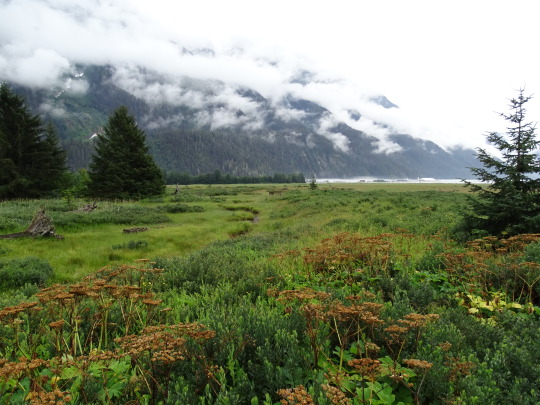

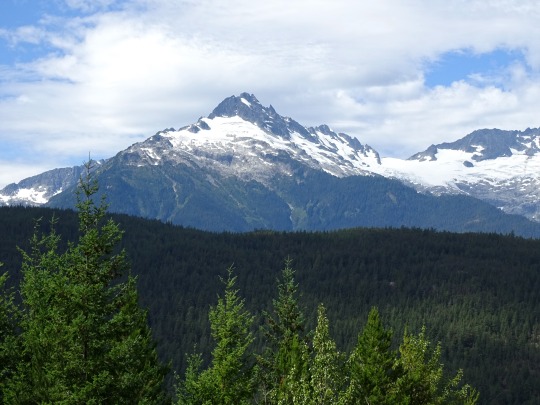
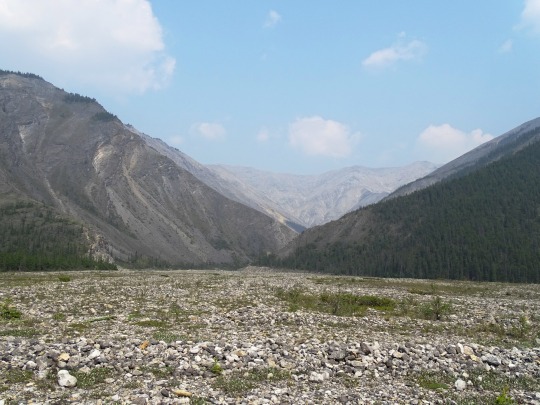



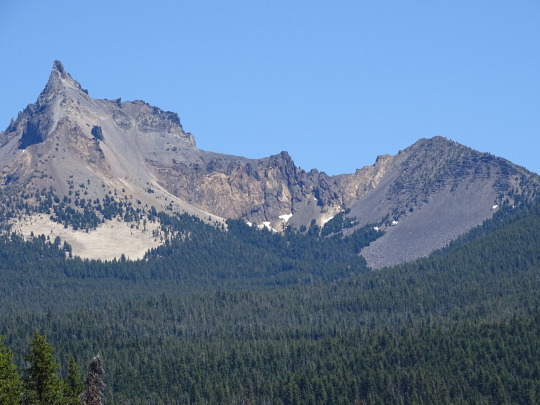
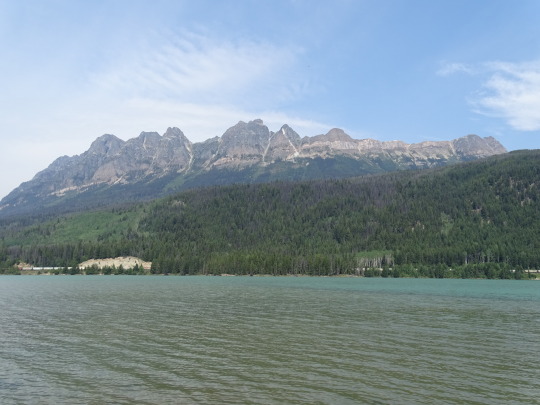



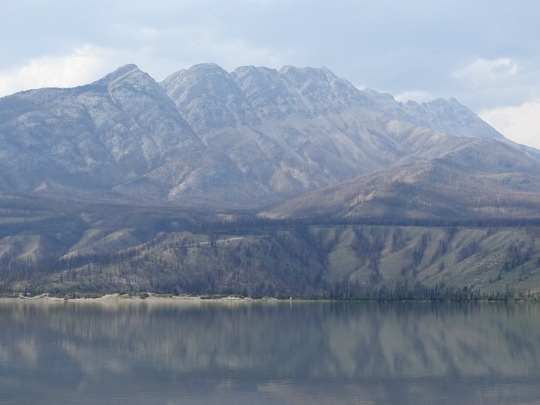
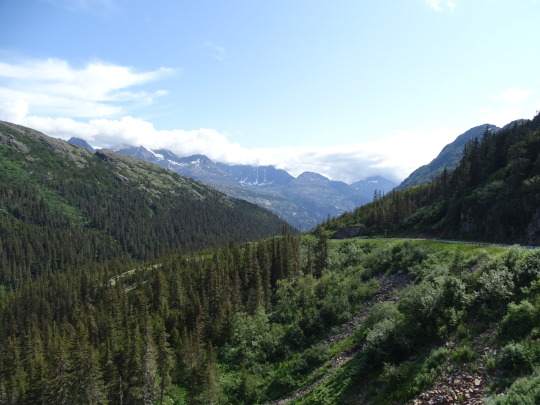
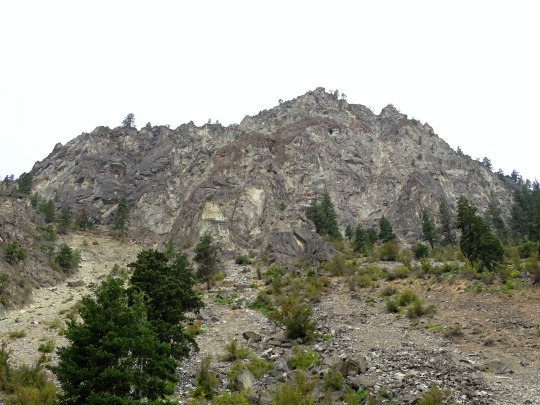


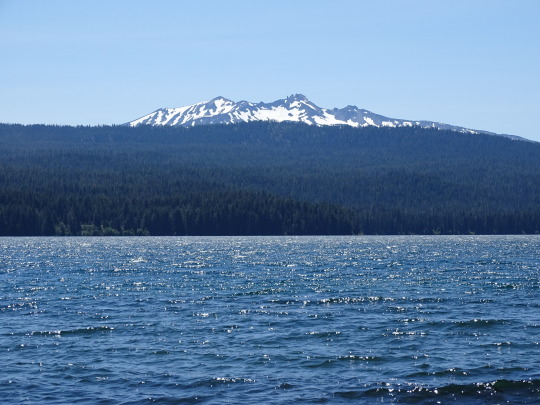
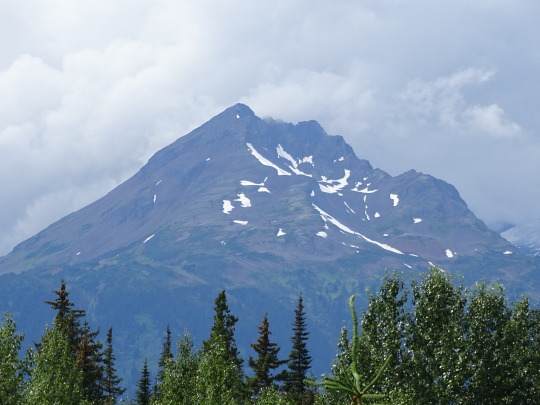
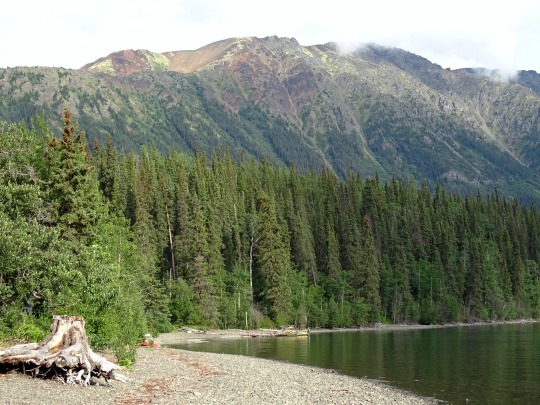
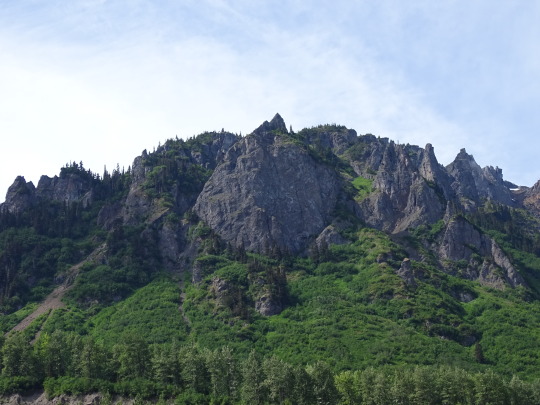
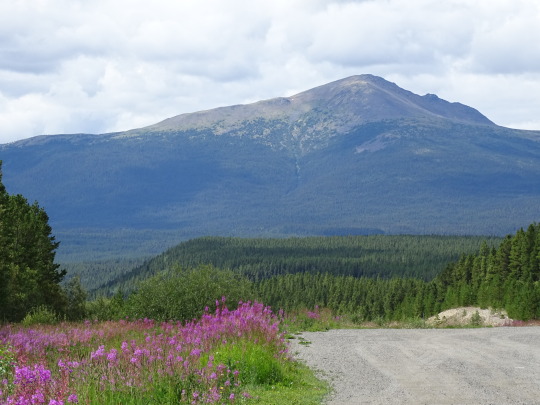
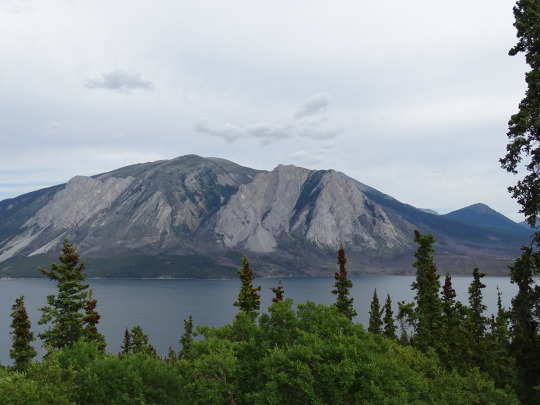



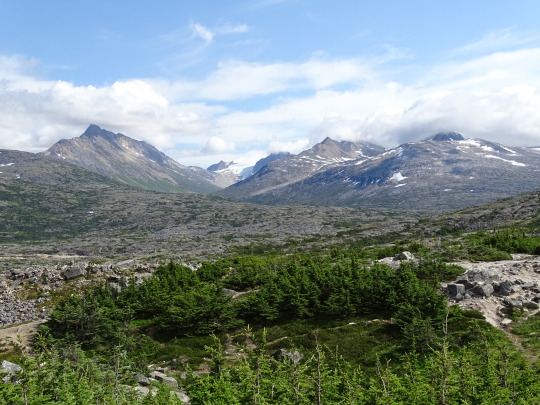
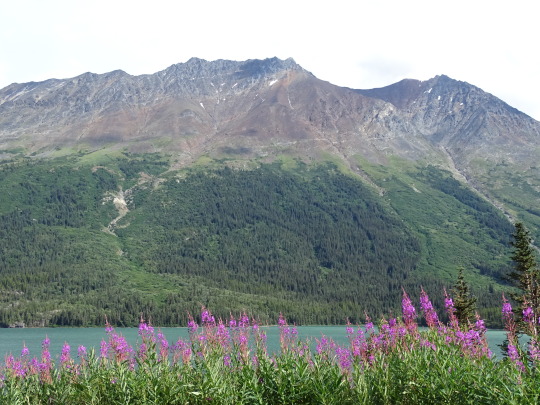

International Mountain Day
Towering, majestic, and beautiful. Mountains are some of the most beautiful of nature’s structures, stolid and regal they stand against the sky, of such a size that they can catch entire countrysides in their shadow, and turn back the ravages of storms against their unflinching sides.
Learn about International Mountain Day
A mountain is basically a huge landform that rises above the land that surrounds it in a limit area, typically forming in a peak at the top. Mountains are generally deemed to be steeper than a hill. Mountains are formed by volcanism or tectonic forces. The force can raise the earth’s surface locally. Glaciers, weather conditions, and rivers can slowly erode the mountains. There are a few mountains that have isolated summits. However, most tend to be part of big mountain ranges.
International Mountain Day has been created so that we can embrace the wonder and magic of the mountains around us. There are some truly spectacular mountains all around the world. You may have even had the pleasure of climbing one or several of them. Some of the most famous mountains include the likes of Mount Kilimanjaro, Mount Fuji, and Mount Everest. On this date, we appreciate all of the world’s mountains. It is also a good day to take some time to reflect on those who have lost their lives while attempting to do dangerous mountain climbs and to pay tribute to them.
Mountains are the source of recreation and resource, with snow-covered sides providing ski slopes to enthusiasts, and minerals in abundance to those brave enough to delve into their stony sides.
In certain areas of the world, they are also a source of unique agriculture, providing ample space for the production of those products that grow best on their slopes. Coffee, Cocoa, Herbs, Spices, and the form of handicrafts that spring from the minds of those who live in the unchanging protection of these towering edifices to geology.
International Mountain Day is your opportunity to head out and appreciate these unique landforms, and all they have to offer. There are a number of reasons why International Mountain Day is loved by people all over the world. This includes the fact that mountains are scarce in some areas of the world, which makes them precious to a lot of people. In fact, you can spend hours reading up about different folk tales and legends about different mountains around the world. This is certainly one of the most fascinating and interesting ways to learn more about the world on International Mountain Day. Plus, International Mountain Day gives you the perfect excuse to climb that mountain that you may have always wanted to climb!
History of International Mountain Day
Established in December of 2003, the United Nations General Assembly created this day to help bring awareness to all of the things we rely on mountains for.
Whether it’s all of the glories mentioned above, or how necessary they are for the health and well-being of the flora and fauna that call them their home, International Mountain Day promotes them all.
How to celebrate International Mountain Day
International Mountain Day can be celebrated in a cavalcade of fun and educational ways. Head out to your local mountain to discover all the things it has to offer. Whether it’s a day in the numerous parks and hidden places that can be found in their craggy terrain, or amazing tourist towns like Leavenworth, WA, get on out there and explore.
Hiking enthusiasts will find the many trails and secret places a joy, as well as being able to enjoy the far flung places that so few ever visit. Due to the challenges of developing them, there is almost always an opportunity to enjoy nature in all its glory.
Even better, once you’ve hiked your way into the far reaches of untouched wilderness, you can settle down to camp away from the light pollution and noise of city life.
Or maybe you prefer to drive, the twisting winding roads that navigate the mountainsides have some of the most beautiful country that can be found, near or far. Snugged down between the rising cliff-face and the sheer drop into the valley, the view is simply unmatched, and such a thing can be refreshing to the human soul. International Mountain Day is a call to get out into the wild and see what it has to offer!
You could also take your mountain bike out on this day, rather than going for a climb or a hike. After all, there are lots of different ways that you can enjoy the spectacular sites of the mountains in your area. Taking your bike and exploring them is one way to go about it! However, do make sure you prioritize safety. Always wear a helmet and it is a good idea to give your bike a check over beforehand as well. This is especially the case if you have not used it for quite some time now.
You can also use International Mountain Day to go camping. A weekend camping in the mountains is an incredible experience. Depending on whether your an outdoor person or not, you may want to go for the full camping experience or you may want to choose somewhere that has some facilities on offer. The choice is yours. There is nothing quite like looking at the mountains around you and the stars in the sky. It is an incredible experience, and definitely one of the best ways to spend International Mountain Day. So, grab your other half or your bestie and enjoy a great camping weekend.
Source
#British Columbia#Yukon#Alberta#Jasper National Park#Coast Mountains#Rocky Mountains#Canada#USA#Alaska#California#travel#original photography#vacation#landmark#tourist attraction#landscape#countryside#Mount Shasta#Mt. Bailey#Broken Mountain#Washington#Oregon#Diamond Peak#International Mountain Day#InternationalMountainDay#11 December#summer 2023
3 notes
·
View notes
Text
how to prepare for the climb

First of all I want to make clear that we are talking about a pretty high mountain. As you know the weather in the mountains is very hard to predict and can often change very quick. In fact the temperature on the summit of Kili is usually below freezing, which means that you can face temperatures of -20°C on Uhuru Peak while having about +30°C down in Moshi. No matter which time of the year: you should always come well prepared. There are different seasons in Tanzania but not like the winter & summer season as we know it from Europe or North America. Due to its proximity to the Equator the year is divided into wet and dry season. Therefore the best time to climb Kilimanjaro is during the dry season between August and October as rainfall during that time is at its lowest and you have the highest chance of having clear views to and from the mountain. On the flip side said months are also the high season on the mountain which means it is also the busiest time of the year (by choosing a longer, less popular route it'll be more relaxed!).
2 notes
·
View notes
Text
26 Tanzania Safari All-Inclusive Packages from USATravel Company: DAV Safaris

Website: www.davsafaris.com
Email:[email protected]
Tel: +256757795781 or +256701412430
Safari Updates
Begin now a lifetime adventure, because over 26 all-inclusive Tanzania safari packages have been recommended mostly for travelers from the USA! Discover unforgettable wildlife experiences as you witness the spectacular Great Wildebeest Migration and encounter the majestic Big Five in stunning and iconic parks like the Serengeti and Ngorongoro Crater.
For those seeking an exhilarating challenge, our mountain hiking safaris offer breathtaking ascents of Mount Kilimanjaro, while bird lovers can immerse themselves in vibrant ecosystems on our specialized birding tours. Each package is thoughtfully crafted to ensure you enjoy expert guidance, comfortable accommodations, and seamless travel logistics.
Join us on a journey through Tanzania’s stunning landscapes and rich, you can contact us today for personalized assistance in planning your dream safari
26 Tanzania Safari All-Inclusive Packages from USA
2-days-fly-in-serengeti-safari-in-tanzania
2-days-tarangire-national-park-and-ngorongoro-crater-safari
3-days-tanzania-safari-in-serengeti-national-park
3-days-tanzania-wildlife-safari
4-days-epic-tanzania-wildlife-and-culture-safari
5-day-kenya-and-tanzania-safari
5-days-circuit-wildlife-safari-in-tanzania
6-days-ndutu-migration-safari-calving-season
8-day-serengeti-ngorongoro-crater-and-zanzibar
8-days-wildlife-and-beach-holiday-tanzania
8-days-wildlife-safari-tanzania
9-days-zanzibar-and-wildlife-safari
10-days-uganda-and-tanzania-safari-gorillas-chimpanzees-and-wildlife
5-days-mount-kilimanjaro-marangu-route
6-days-mount-kilimanjaro-machame-route
7-day-climbing-kilimanjaro-via-the-machame-route
8-days-kilimanjaro-climbing-safari-lemosho-route-mount
9-days-kilimanjaro-climb-lemosho-route
12-days-mount-kilimanjaro-climb-and-tanzania-safari-tour
4-days-tanzania-birding-safari-to-lake-manyara-national-park
5-days-birding-tour-in-tanzania
9-days-birding-and-wildlife-safari-in-tanzania
12-days-birding-safari-in-tanzania
Tanzania Wildlife Safaris All-Inclusive Packages from USA
Experience the adventure of Tanzania wildlife safaris all-inclusive packages from the USA, featuring the Great Wildebeest Migration, Big Five safaris, thrilling game drives, and relaxing Zanzibar beach vacations for the perfect getaway
2 Days Fly-In Serengeti Safari in Tanzania
The 2 Days Fly-In Serengeti Safari offers a seamless travel experience, allowing you to fly directly into the heart of the Serengeti. This package includes guided game drives to witness the majestic wildlife, including the Big Five. With comfortable accommodations and all meals covered, you’ll enjoy the thrill of spotting lions, elephants, and leopards in their natural habitat. This short yet immersive safari is perfect for those with limited time but a strong desire to experience Tanzania's iconic landscapes and wildlife.
2 Days Tarangire National Park and Ngorongoro Crater Safari
Experience the best of Tanzania's wildlife with the 2 Days Tarangire National Park and Ngorongoro Crater Safari. This all-inclusive package features breathtaking views and diverse ecosystems. You’ll explore Tarangire's famous elephant herds and the stunning Ngorongoro Crater, a UNESCO World Heritage Site. With luxurious accommodations and expert guides, travelers will enjoy game drives that reveal abundant wildlife, including rare black rhinos. This package is ideal for those looking to maximize their wildlife encounters in a compact timeframe.
3 Days Tanzania Safari in Serengeti National Park
The 3 Days Tanzania Safari in Serengeti National Park provides a deeper dive into this iconic reserve. This all-inclusive package includes comfortable lodging, meals, and thrilling game drives that showcase the park’s rich biodiversity. With opportunities to witness the Great Migration during peak season, travelers can expect stunning views of thousands of wildebeests and zebras. This safari perfectly balances adventure and relaxation, making it a must for wildlife enthusiasts seeking an immersive experience.
3 Days Tanzania Wildlife Safari
Join the 3 Days Tanzania Wildlife Safari for an unforgettable journey through Tanzania’s breathtaking landscapes. This package includes visits to renowned parks such as the Serengeti and Tarangire, where you'll encounter diverse wildlife, from elephants to cheetahs. With all accommodations, meals, and guided tours included, this package ensures a hassle-free experience. Ideal for first-time visitors, this safari highlights the best of Tanzania’s natural beauty and wildlife diversity.
4 Days Epic Tanzania Wildlife and Culture Safari
Embark on the 4 Days Epic Tanzania Wildlife and Culture Safari to experience both the wildlife and rich local culture. This package includes visits to the Serengeti and Ngorongoro Crater, along with cultural interactions with Masai communities. Travelers enjoy guided game drives, luxurious lodgings, and authentic local meals, providing a holistic view of Tanzania. This unique blend of adventure and culture sets this safari apart, making it perfect for those seeking a comprehensive Tanzanian experience.
5 Days Kenya and Tanzania Safari
The 5 Days Kenya and Tanzania Safari is perfect for those wanting to experience the best of both countries. This all-inclusive package includes thrilling game drives in the Serengeti and Masai Mara, allowing you to witness the Great Migration and abundant wildlife. With comfortable accommodations and all meals provided, you'll enjoy a seamless blend of adventure and comfort, making this safari an ideal choice for wildlife enthusiasts wanting diverse landscapes and ecosystems.
5 Days Circuit Wildlife Safari in Tanzania
Explore the wonders of Tanzania with the 5 Days Circuit Wildlife Safari. This all-inclusive package takes you through Tarangire, Serengeti, and Ngorongoro Crater, showcasing the country’s iconic wildlife. With expert guides leading the way, you’ll have the chance to see elephants, lions, and flamingos, among other incredible species. Comfortable lodgings and meals are included, ensuring a stress-free adventure filled with unforgettable wildlife encounters.
6 Days Ndutu Migration Safari Calving Season
Witness the breathtaking spectacle of the Great Migration with the 6 Days Ndutu Migration Safari during Calving Season. This all-inclusive package allows you to experience the calving of wildebeests, where thousands of newborns dot the landscape. Enjoy guided game drives, luxurious accommodations, and all meals as you explore the Serengeti’s rich wildlife during this spectacular event. This package is perfect for those looking for a unique safari experience during one of nature's most incredible displays.
8 Days Serengeti, Ngorongoro Crater, and Zanzibar
Combine adventure with relaxation in our 8 Days Serengeti, Ngorongoro Crater, and Zanzibar package. This all-inclusive journey begins with thrilling game drives in the Serengeti and Ngorongoro, followed by a serene beach stay on the beautiful shores of Zanzibar. With all accommodations, meals, and transfers included, this package offers a perfect blend of wildlife encounters and beach relaxation, making it ideal for travelers wanting the best of both worlds.
8 Days Wildlife and Beach Holiday Tanzania
The 8 Days Wildlife and Beach Holiday Tanzania package offers an incredible dual experience of thrilling safaris and relaxing beach time. Start your adventure with guided game drives in renowned parks such as Serengeti and Ngorongoro, before unwinding on the pristine beaches of Zanzibar. With all-inclusive accommodations and meals, this package ensures a seamless experience, combining the excitement of wildlife exploration with the tranquility of coastal relaxation.
8 Days Wildlife Safari Tanzania
Join the 8 Days Wildlife Safari Tanzania for an immersive exploration of Tanzania's diverse ecosystems. This all-inclusive package includes wildlife-rich areas like Serengeti, Tarangire, and Ngorongoro Crater, where you’ll encounter a wide variety of animals in their natural habitats. Enjoy comfortable lodgings, all meals, and expert guides to enhance your experience, making it perfect for wildlife enthusiasts seeking an unforgettable adventure.
9 Days Zanzibar and Wildlife Safari
Experience the breathtaking beauty of Tanzania with our 9 Days Zanzibar and Wildlife Safari. This all-inclusive package combines the stunning beaches of Zanzibar with thrilling wildlife adventures in Serengeti and Ngorongoro Crater. Enjoy guided safaris, luxury accommodations, and cultural experiences, all tailored for travelers from the USA. Witness the Great Migration, explore diverse ecosystems, and relax on pristine shores. Ideal for adventure seekers and beach lovers alike, this package offers an unforgettable journey into Tanzania's rich biodiversity and vibrant culture.
10 Days Uganda and Tanzania Safari - Gorillas, Chimpanzees and Wildlife
Embark on a transformative 10 Days Uganda and Tanzania Safari. This all-inclusive package from the USA takes you through lush jungles and savannahs, offering encounters with mountain gorillas and playful chimpanzees. Enjoy guided treks, luxurious lodges, and immersive wildlife experiences in iconic national parks. Witness the stunning landscapes of Uganda and Tanzania, and marvel at diverse wildlife, from elephants to rare birds. Perfect for nature enthusiasts, this safari combines adventure with comfort, ensuring a memorable exploration of East Africa's natural wonders.
10 Days Wildlife Kenya and Tanzania Safari
Join our 10 Days Wildlife Kenya and Tanzania Safari for an unforgettable all-inclusive adventure. This package from the USA explores the rich wildlife of both countries, featuring game drives in the Serengeti and Masai Mara. Experience the thrill of witnessing the Big Five and the Great Migration. Enjoy comfortable accommodations, expert guides, and authentic cultural interactions. Designed for wildlife lovers and adventure seekers, this safari promises breathtaking landscapes and incredible wildlife encounters, making it a must for any traveler seeking to explore East Africa.
12 Days Kenya and Tanzania Wildlife Safari
Discover the magic of East Africa with our 12 Days Kenya and Tanzania Wildlife Safari. This all-inclusive package caters to travelers from the USA, offering an extensive exploration of iconic national parks. Experience thrilling game drives, witness the Great Migration, and relax in luxurious lodges. From the vast savannahs of the Serengeti to the stunning landscapes of the Masai Mara, every day is filled with adventure. Ideal for families, couples, and solo travelers, this safari provides an immersive experience in the heart of Africa’s wildlife paradise.
Tanzania Mountain Hiking Safaris All-Inclusive Packages from USA
Embark on Tanzania Mountain hiking safaris all-inclusive packages from the USA, featuring stunning ascents of Mount Kilimanjaro at 19,341 feet, including routes like Marangu, Machame, and Lemosho over multiple days
5 Days Mount Kilimanjaro Marangu Route
For those seeking adventure, the 5 Days Mount Kilimanjaro Marangu Route offers a unique opportunity to summit Africa's highest peak. This all-inclusive package includes accommodations, meals, and expert guides, ensuring a safe and enjoyable climb. Experience stunning landscapes and diverse ecosystems as you ascend, and enjoy the camaraderie of fellow climbers. This package is ideal for adventurous travelers looking to conquer Kilimanjaro and create lasting memories.
6 Days Mount Kilimanjaro Machame Route
The 6 Days Mount Kilimanjaro Machame Route is designed for those wanting a more challenging climb. This all-inclusive package includes expert guides, meals, and comfortable accommodations along the route. Known for its breathtaking views and varied landscapes, the Machame Route offers climbers a chance to experience diverse ecosystems and stunning vistas. This adventure is perfect for those looking to test their limits while enjoying the beauty of Kilimanjaro.
7 Days Climbing Kilimanjaro via the Machame Route
Take on the adventure of a lifetime with our 7 Days Climbing Kilimanjaro via the Machame Route. This all-inclusive package includes everything from meals and accommodations to expert guides who ensure your safety and success. The Machame Route is known for its scenic beauty and varied terrain, making it ideal for those wanting to experience the majesty of Kilimanjaro in depth. This package is perfect for adventurous travelers seeking a memorable climbing experience.
8 Days Kilimanjaro Climbing Safari Lemosho Route Mount
Experience the Lemosho Route with our 8 Days Kilimanjaro Climbing Safari. This all-inclusive package provides climbers with stunning views, diverse wildlife, and the chance to conquer Africa's highest peak. With expert guides, meals, and comfortable lodging included, you’ll enjoy a seamless climbing experience. The Lemosho Route is less crowded and offers spectacular scenery, making it a great choice for those seeking a unique climbing adventure.
9 Days Kilimanjaro Climb - Lemosho Route
The 9 Days Kilimanjaro Climb - Lemosho Route package is ideal for those wanting a comprehensive climbing experience. This all-inclusive journey includes expert guides, meals, and comfortable accommodations, allowing you to focus on reaching the summit. The Lemosho Route offers stunning views and a chance to acclimatize properly, making it a favorite among climbers. This package is perfect for adventurers looking for a challenging and rewarding experience.
12 Days Mount Kilimanjaro Climb and Tanzania Safari Tour
Combine climbing and wildlife exploration with our 12 Days Mount Kilimanjaro Climb and Tanzania Safari Tour. This all-inclusive package offers a unique blend of adventure, featuring a Kilimanjaro ascent followed by thrilling safaris in Serengeti and Ngorongoro. Enjoy expert guidance, meals, and accommodations throughout, ensuring a seamless experience. This package is perfect for those wanting to conquer Kilimanjaro and explore Tanzania's incredible wildlife in one unforgettable journey.
Tanzania Birding Tours All-Inclusive Packages from USA
Explore Tanzania birding tours all-inclusive packages from the USA, featuring stunning locations like Lake Manyara and Tarangire, where you can spot over 400 bird species and immerse yourself in breathtaking landscapes
4 Days Tanzania Birding Safari to Lake Manyara National Park
Bird enthusiasts will love the 4 Days Tanzania Birding Safari to Lake Manyara National Park. This all-inclusive package focuses on the rich avifauna of Tanzania, featuring over 400 bird species. Enjoy guided bird watching tours, comfortable accommodations, and delicious meals as you explore diverse habitats. This unique safari is perfect for bird lovers eager to witness Tanzania's stunning birdlife in a beautiful setting.
5 Days Birding Tour in Tanzania
The 5 Days Birding Tour in Tanzania offers birdwatchers a chance to discover the country's rich avian diversity. This all-inclusive package includes visits to prime birding locations like Lake Manyara and Tarangire National Park. With expert guides, comfortable lodging, and all meals covered, this tour ensures a fantastic bird watching experience. Perfect for avid birders, this package showcases Tanzania's spectacular birdlife in breathtaking landscapes.
9 Days Birding and Wildlife Safari in Tanzania
Join the 9 Days Birding and Wildlife Safari in Tanzania for a comprehensive experience of Tanzania's stunning wildlife and bird species. This all-inclusive package combines wildlife viewing in Serengeti and Ngorongoro Crater with dedicated bird watching tours. With expert guides, comfortable accommodations, and all meals included, this safari is perfect for nature lovers seeking an immersive experience in Tanzania’s rich biodiversity.
12 Days Birding Safari in Tanzania
The 12 Days Birding Safari in Tanzania is an extensive exploration of Tanzania’s avifauna. This all-inclusive package includes visits to diverse habitats, ensuring opportunities to see a wide variety of bird species. With expert guides, luxurious accommodations, and meals provided, this safari is ideal for serious birdwatchers and nature enthusiasts looking to experience Tanzania’s incredible bird life in depth.
20 Days Birding Safari in Tanzania
The 20 Days Birding Safari in Tanzania is the ultimate adventure for bird lovers. This all-inclusive package covers numerous prime birding locations across Tanzania, offering ample opportunities to spot rare and endemic species. With expert guides, comfortable lodging, and all meals included, this tour ensures a comprehensive and immersive bird watching experience. Perfect for dedicated birders, this safari promises to showcase the diversity and beauty of Tanzania’s avifauna.
Choose DAV Safaris Tanzania Safari All-Inclusive Packages from USA
Choose DAV Safaris for your Tanzania safari all-inclusive packages from the USA! Our team of experts is dedicated to tailoring and customizing each package to meet your unique adventure needs, ensuring unforgettable experiences. Whether you're interested in wildlife safaris, mountain hiking, or birding tours, we’ve got you covered. Feel free to contact us for assistance—we're here to help you plan the perfect journey through Tanzania’s breathtaking landscapes
Our Popular Tours
4-Days Samburu and Ol Pejeta Kenya safari experience
6-Days Big five Kenya and Tanzania combined Safari trip
6-Days Unmatched Zanzibar Beach Holidays and Tanzania Wildlife Safaris
3-Days Tarangire, Ngorongoro & Manyara Tanzania safari holiday
5 Day Classic South Africa wildlife tours
4 Days best of Nxai pan national park and Makgadikgadi pans Botswana luxury tours
5 Days Zimbabwe Tour of Hwange and Lake Kariba
4 Days Southern Africa Safari in Kruger, Canyon and Boat Tour
6-Days Best Masai Mara safari tour and Serengeti safari combo
12-Days Masai Mara safari, Serengeti, Ngorongoro and Zanzibar beach holidays
6 Days Best of Okavango Delta on Botswana Safari
4 Days Southern Africa Safari in Sabi Sand with Elephant Plains
3 Days Chobe Botswana Safari from Victoria Falls
4 Days Safari in Rwanda's Akagera, Golden Monkeys and Bwindi Gorillas
4 Days All-Inclusive Gorilla Tracking Rwanda Tour
6 Days Safari in Zimbabwe, Zambia and Botswana
3 Day Mana Pools National Park luxury Zimbabwe safaris
3 Days Botswana Safari in Chobe National Park
14-Days Thorough Tanzania safari tour and Zanzibar beach holidays
4 Days South African Tour in Kruger National Park via Panorama Route
3 Days Victoria Falls Tour and Sunset Cruise on Zimbabwe Safari
4-Days Classic Tanzania Safari to Tarangire, Ngorongoro & Manyara with Hadzabe Tour
3 Days Gorilla Tracking Rwanda and Golden Monkeys Tour
3 Days Akagera Big Five Safari and Boat Cruise on Rwanda Tour
3 Days Victoria Falls Tour on a Zimbabwe Safari
5 Days Savuti and Khwai Botswana Safari
4-Day Safari in South Africa in Kruger National Park
0 notes
Text
Choosing the Best Time for Your Summit Adventure

Summiting During A Full-Moon
Trekking to Uhuru Peak under a full moon's glow is an unforgettable experience. As the lunar light illuminates the mountain's peaks and sprawling glaciers, climbers are treated to an amazing sight.
Many mountaineers purposely align their expedition dates to coincide with the full moon's appearance, which graces the sky once each month. Seasoned hikers often consider summiting during a full moon as the Best Time to Climb Mount Kilimanjaro.
Why Kilimanjaro Full-Moon Climbs Are Good?
Besides the natural spectacle, Kilimanjaro Full Moon Climbs have a practical advantage too. The moonlight, when paired with a cloudless sky, enhances the visibility during the climb, which can be especially useful during the final push to the summit.
Kilimanjaro Routes & Weather
Trail conditions on Kilimanjaro significantly shape your travel schedule, playing a pivotal role in determining the Best Time to Climb Mount Kilimanjaro. Let's explore each trail, understanding how their unique offerings vary across different seasons.
Typically, the Machame Route and Lemosho Route situated on the western side are the recommended routes for Climbing Kilimanjaro during the dry season. The rainy season can render these routes quite challenging due to significant rainfall, resulting in a less-than-pleasant camping experience.
On the contrary, the Rongai Route is a suitable choice for the wet season. This trail is located on the mountain’s northern side and is less exposed to rainfall compared to the western routes. This makes Rongai route a more manageable option during rainier months.
Approaching Kilimanjaro from the northern side, the Northern Circuit Route is one of the longest paths and provides a high acclimatization rate. Also, because of its length and difficulty, the Northern Circuit Route sees fewer climbers and can be a good choice for those seeking a more solitary climb experience.
For more comprehensive information about all the climbing routes, read the Kilimanjaro Climbing Routes comparison.
Choose The Right Time For Your Kilimanjaro Climb
In the adventure of Mount Kilimanjaro Climbing, choosing the Best Time to Climb Mount Kilimanjaro is as crucial as your preparedness for the trek. The joy of scaling the 'Roof of Africa' is a constant, regardless of the month. African Scenic Safaris is dedicated to accompanying you on this journey, guaranteeing a successful and memorable climb. So, no more waiting; it's time to seize the opportunity and scale to the majestic heights of Kilimanjaro.
#Best Time to Climb Mount Kilimanjaro#Machame Route#Lemosho Route#Northern Circuit Route#Kilimanjaro Climbing Routes#Mount Kilimanjaro Climbing
0 notes
Text

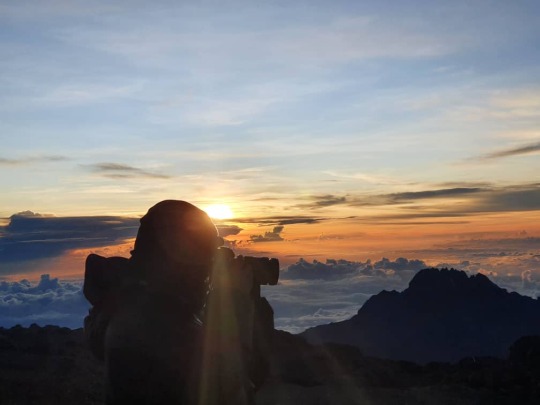
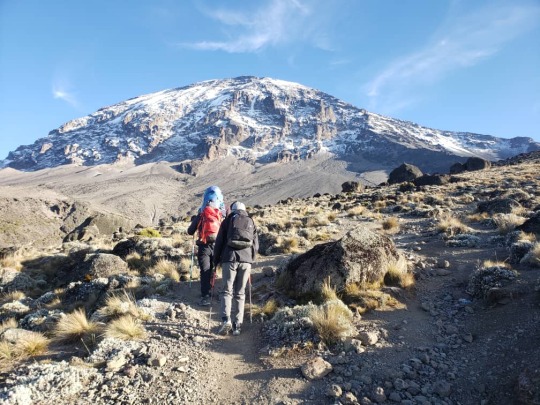
The Marangu route, also known as the "Coca-Cola" route, is the oldest, most well-established route on Kilimanjaro. This is the only route which offers sleeping huts in dormitory style accommodations in lieu of camping. There are 60 bunk beds each at Mandara and Kibo Huts, and 120 bunk beds at Horombo Hut. Guests are supplied with mattresses and pillows, but sleeping bags are still required. The huts have communal dining halls and basic washrooms, ranging from flushing toilets and running water at the lower huts to long drop toilets and buckets of water at Kibo Hut. Many favor Marangu because it is considered to be the easiest path on the mountain, given its gradual slope and direct path. However, the short time frame of the route makes Altitude Acclimatization fairly difficult. The route approaches Mount Kilimanjaro from the southeast. Marangu is unfortunately less scenic than the other routes because the ascent and descent are along the same path. It is also the most crowded route for that reason.
Day 1: Marangu Gate to Mandara Hut Elevation (ft): 6,046 ft to 8,858 ft Distance: 8 km Hiking Time: 4-5 hours Habitat: Rain Forest Hut: Mandara Hut. We head to the Marangu Gate for the necessary formalities before beginning our trek. The trail climbs through a tropical rain forest near the upper edge of the forest line, where we sometimes see playful blue monkeys. The trail then widens to expose beautiful hillsides until we reach Mandara Hut.
Day 2: Mandara Hut to Horombo Hut Elevation (ft): 8,858 ft to 12,205 ft Distance: 12 km Hiking Time: 6-8 hours Habitat: Heath / Moorland Our second day on the trail starts up with a steep ascent through the forest and opens into high moorland. If the sky is clear, we might get our first views of Kibo and Mawenzi Peaks. Those two volcanic peaks make up the summit of Kilimanjaro.
Day 3: Horombo Hut to Mawenzi Hut to Horombo Hut Elevation (ft): 12,205 ft to 14,160 ft to 12,205 ft Distance: 10 km Hiking Time: 3-5 hours Habitat: Heath This extra day is used for Adaptation. We hike towards or all the way to Mawenzi Hut and back. The unique landscape offers motivating views of Kibo and Mawenzi.
Day 4: Horombo Hut to Kibo Hut Elevation (ft): 12,205 ft to 15,430 ft Distance: 10 km Hiking Time: 6-8 hours Habitat: Alpine Desert On this day we climb gently, then cross the lunar desert of the “Saddle” between Mawenzi and Kibo to reach our campsite, which sits at the bottom of the Kibo crater wall. Once at Camp, we rest and enjoying an early dinner and prepare for summit day.
Day 5: Kibo Hut to Uhuru Point to Horombo Hut Elevation (ft): 15,430 ft to 19,341 ft to 12,205 ft Distance: 22 km Hiking Time: 10-13 hours Habitat: Arctic We wake up in the middle of the night and begin the final push to reach the Roof of Africa. The trail to Gilman’s Point is very steep, and the ascent will be slow and steady. From Gilman’s, it is a traverse along the crater rim to Uhuru Peak. We stay at the summit for a short time, to take photos and enjoy the views, before retracing our steps all the way back to Horombo Hut.
Day 6: Horombo Hut to Marangu Gate Elevation (ft): 12,205 ft to 6,046 ft Distance: 20 km Hiking Time: 5-7 hours Habitat: Rain Forest A long trek is in store for today, however it is mostly downhill. Once we reach the park headquarters, there at Marangu Gate, we pick up our certificate, that proves our achievement, and catch our vehicle transfer to the Hotel in Moshi.
Included o Park fees, o Hut fees o Rescue fees o 18% VAT on tour fees & services, which cost nearly 55 % of the total cost charged. o Transportation to & from the Mountain Gate o Professional mountain guides, cooks and porters o 3 meals daily while on the mountain
Not Included o Both national and international flights o Medical Insurance o Tips to Mountain Crew o Items of a personal nature o Laundry Services o Alcoholic beverages
Contact Us via WhatApp +255 786499087
Email us Direct: [email protected]
#Marangu Route 6 days Trek#Kilimanjaro Marangu Itinerary#Marangu Route Summit Climb#6-day Marangu Route Highlights#Kilimanjaro Marangu Huts#Marangu Route Acclimatization#Best Time to Hike Marangu#Marangu Route Camping Options#Kilimanjaro Scenic Views#Marangu Route Difficulty Level#Kilimanjaro National Park#Marangu Route Accommodation#Kilimanjaro Guided Expeditions#Marangu Route Altitude Sickness#Kilimanjaro Weather Conditions#Marangu Route Trekking Adventure#Kilimanjaro Uhuru Peak Ascent#Marangu Route Flora and Fauna#Kilimanjaro Cultural Tours
0 notes
Text
Adventure tours Tanzania takes care of adrenaline junkies and nature darlings the same, giving thrilling encounters the nation over. From journeying the moving ways of Mount Kilimanjaro to leaving on thrilling natural life safaris, Experience Visits Tanzania submerges you in the magnificence of Africa.
1 note
·
View note
Text
Climbing Kilimanjaro Made Easy: Top Package Deals for an Unforgettable Adventure
At Njofu Expedition, we believe that climbing Mount Kilimanjaro should be more than just an adventure—it should be an unforgettable experience that inspires you for a lifetime. Known as the "Roof of Africa," Kilimanjaro offers breathtaking views, diverse landscapes, and the thrill of standing atop one of the world's most iconic peaks. With our expertly crafted climbing Kilimanjaro packages, we make this dream a reality for adventurers of all levels.

Our team at Njofu Expedition understands that every climber has unique needs, and that’s why we offer a range of packages tailored to your preferences. Whether you’re a first-time climber or an experienced trekker, we provide personalized options that ensure your journey is safe, enjoyable, and rewarding. From budget-friendly group climbs to luxurious private expeditions, our packages are designed to fit your style and budget.
When you choose Njofu Expedition, you’re not just signing up for a trek—you’re joining a family that supports you every step of the way. Our professional guides are experienced and passionate about sharing their knowledge of Kilimanjaro’s trails, wildlife, and history. They’ll keep you motivated and ensure you’re fully acclimatized, giving you the best chance of reaching the summit.
Our climbing Kilimanjaro packages include everything you need for a seamless adventure. From airport transfers and comfortable accommodations to nutritious meals and high-quality gear, we’ve got you covered. We also take pride in supporting local communities, ensuring that your journey with us leaves a positive impact on the region.
For those seeking an extra touch of adventure, we offer customizable packages that include scenic routes such as the Machame, Marangu, and Lemosho trails. Each route offers its unique charm, and we’re here to help you choose the one that matches your goals and abilities.
At Njofu Expedition, our goal is simple: to turn your Kilimanjaro dream into a reality. Let us handle the logistics while you focus on the experience of a lifetime. Whether you’re traveling solo, with friends, or as part of a group, we’ll ensure your adventure is unforgettable.
Start your journey today with Njofu Expedition and discover why our climbing Kilimanjaro packages are the best choice for your next adventure. Reach out to us—we’re here to make your dreams come true!
0 notes
Text
Best Safari Destinations In Tanzania – Why Book A Safari Tour
It is endowed with some of the best features that Africa has to offer regarding natural attractions, great mountain which is Mt.Kilimanjaro for adventure lovers. Also known as the “Roof of Africa,” people climb Kilimanjaro in their thousands each year.
Selecting the correct mount kilimanjaro climbing tours is very important if one has to get the best of adventure without compromising with the safety aspect. However, Tanzania also has some of the finest safari sites globally, suggesting its suitability as one of the great adventure and wildlife viewing destinations.

Mount Kilimanjaro Climbing Tours
While choosing the mount kilimanjaro climbing tours following aspects should be considered: available routes, experience of the tour company and available infrastructure. The type of route also affects the degree of acclimatization and your experience; hence, consult your fitness level and time constraints with your operator.
Make sure you pick a tour operator for the Best Safari Destinations In Tanzania that is reputable, their guides experienced, and the companies personnel are conforming to safety precautions. There’s quite a difference in the ability of different operators and routes to reach the top, and so choose one that would focus more on safety and having the climbers get used to the altitude difference rather than the time taken up the mountain. Also, menu operators which have concise porters, meals and camping equipment because these rewards make trekking even more exciting.
Apart from Kilimanjaro, Tanzania has arguably one of the Best Safari Destinations In Tanzania and promising wildlife viewing destinations on the continent. Serengeti National Park is famous for the Great Migration of two millions of wildebeests and zebras conducting their movement across the plains. The other place of interest is the Ngorongoro Crater where lions, elephants and rhinos thrive in the only caldera in the world. If you want to isolate yourselves a little, Tarangire National Park and Lake Manyara offer good game viewing, different terrains and lots and lots of birds. Every place, the best mount kilimanjaro climbing tours leads the visitors closer to Africa’s wildlife legacy thus making Tanzania unique destination for both climbing and safaris.
#Mount Kilimanjaro Climbing Tours#Professionally Guided Safaris In Kenya#Rwanda Gorilla Trekking and Safari Tours
0 notes
Text
Step By Step Guide on How to Plan for a Tour to Tanzania for Indian Tourists for the First Time
Tanzania, with its stunning wildlife, sprawling national parks, and picturesque beaches, has become a go-to destination for travelers seeking adventure and relaxation. For Indian travelers wanting to engage in a Personalized tour package to this East African nation, such plans may be a hard nut to crack. However, with careful planning and guidance, some factors can help you come up with a truly customized international tour package. This blog vouches not just for the provision of the package but also walks you through a systematic approach to scheduling a holiday abroad under personalised tour packages from India to international travel price, including itineraries, visa application details, and travel advice.
Choose Your Itinerary
Selecting the right itinerary is very important, especially when organizing a tour to Tanzania. A country that has many areas worth visiting depending on an individual’s area of specialization. The following are among the best options for Customized tour packages International:
Serengeti National Park
Ngorongoro Conservation Area
Zanzibar
Lake Manyara National Park
Pemba Island
Kondoa Rock Art Sites
Tarangire National Park
Mount Kilimanjaro
Wildlife, beach relaxation, or cultural and historical sites, why go through the stress of trying to plan everything when there are customized international tour packages? Gottaholiday designs the itinerary according to your desires.
Best Time to Visit
The best time to visit Tanzania is during the dry season, from July to October. During this period, the animals are more active, and it is easier to spot lions, elephants, and Giraffes in their natural habitat. A bonus is a fact that the weather is favorable for safaris and other outdoor activities, and the national parks are cool. For those who would like to sunbathe and swim in the blue lagoons of the Zanzibar islands, the dry season in the region wanders into several collections of warm and bright sunny days.
Tanzania Traditional Food
When you choose Customized tour packages in Tanzania, do not forget to take advantage of the opportunity to try some of the cuisines. In mainland Tanzania, typical cuisine includes wali (rice), ugali (maize porridge), nyama choma (roasted meat), and shikakai (sliced grilled beef). On the tropical island of Zanzibar, a local meal consists of fresh fish, biryani, and stomach-warming coconut dishes. Eating Tanzanian dishes is a delicious way to embrace the country and its people.
Determine What Activities You Will Do
There are countless activities to enjoy in Tanzania, and with customized tour packages International, you can explore them all. Here are a few highlights:
Climb Mount Kilimanjaro: This hike will take you to the summit of the tallest peak in Africa, and it has been hailed as the most challenging.
Discover Zanzibar: Enjoy cut-off beaches, clear water and unique shopping experiences.
Go on a Wildlife Safari: Get the chance to experience the beauty of the Serengeti and its animals all in one place.
Relax on the Beaches: The best environment that a beach lover would ever want is found on the beaches of Zanzibar.
Conclusion
It is possible to plan all arrangements for the trip to India and specifically arrange personalised tour packages. After following these steps, you’ll be able to design an itinerary that includes everything from your air tickets to hotel accommodations for the perfect vacation. For this reason, we recommend that you proceed with bookings using Gottaholiday, where Custom International Tour packages are created according to your requirements. Contact Gottaholiday to plan your Personalised tour package today!
0 notes